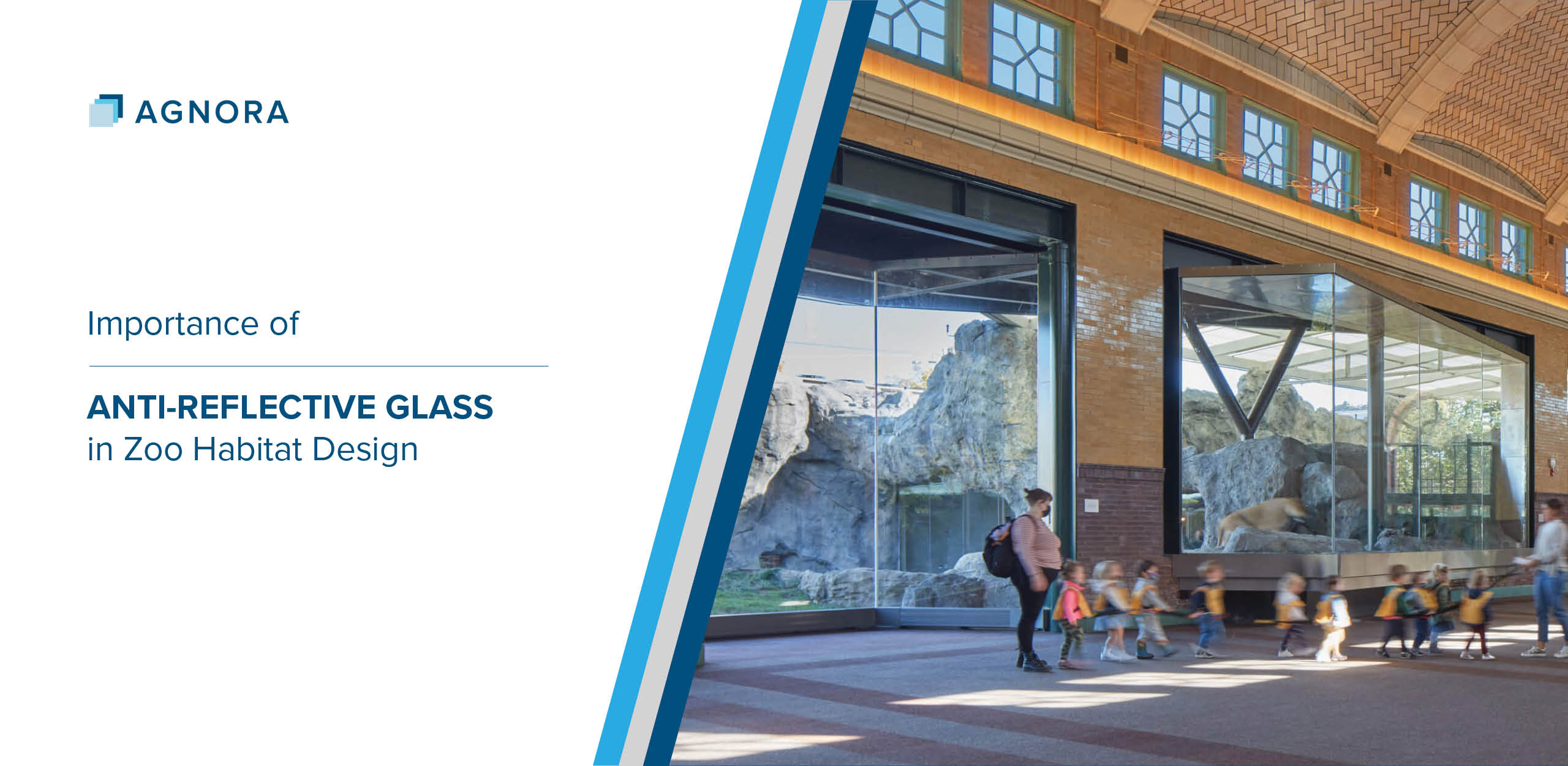
March 25, 2024
Anti-Reflective Glass in Zoo Habitat Design
When it comes to zoological parks, the design and construction of habitats are crucial not just for the aesthetic pleasure of visitors but also for the well-being of the animals that dwell within them. One often-overlooked element that plays a significant role in both these aspects is the type of glass used in enclosures and viewing areas. This article will take a detailed look at why anti-reflective glass has become an indispensable tool for architects and zoo managers, how it transforms experiences for both visitors and the animals, and the empirical evidence backing its use.
The Invisible Partition for Enhanced Zoological Experiences
In modern zoo architecture, the boundary between animals and visitors is not merely physical but perceptual. The right kind of glass in enclosures and exhibits performs a delicate dance. It needs to ensure the safety of the public, while at the same time offering an unobtrusive and clear barrier that doesn’t diminish the spectacle of the animal kingdom.
Mirrors and Misinterpretations
Traditional glass is fraught with challenges. The mirror-like qualities of regular window panes can cause reflections that confuse and agitate the inhabitants of the enclosures, leading to stress and behavioral anomalies. These reflections equally detract from the viewing experience, sending distractions to visitors and unwanted signals to the animals — a design element that can transform serene encounters into moments of ambiguity and unease.
Human-dominated landscapes, Animal-friendly Glass
Through the utilization of anti-reflective glass, zoos can cater to the innate curiosity of their visitors, offering clear, unadulterated views of their animal charges. This type of glass, pioneered in the zoo context, cuts down not only on reflective images but also on the incidence of UV light — a common component in standard glass that can both disturb viewing experiences and potentially affect the health of animals.
Enhancing the Visitor Experience: Seeing Beyond the Glass
With the right glass, zoo visitors can truly get lost in observing the natural behaviors and beauty of the animals without the interference of their own reflections.
Clarity is Key
Anti-reflective glass, designed to minimize surface reflections from both sides, ensures that the details of naturalistic habitats and animal appearances are not marred by distractions. This subtlety is especially important in facilities aiming to support educational programs, making it easier for both adults and children to remain focused on the informational content rather than the reflections on the glass.
Educational Engagement
By providing a viewing experience that is virtually indistinguishable from the “wild,” zoos can enhance the learning capacity of their audiences. Distorted views can lead to misperceptions of an animal’s natural size, color, and form, thereby hampering educational initiatives. Clear, non-reflective glass promotes accurate understanding and appreciation of the species, its environment, and conservation messages.
Professional Recommendations and Design Integration
For architects and designers looking to incorporate anti-reflective glass into their zoo projects, the process involves more than just swapping one material for another.
Collaborative Construction
It’s instrumental for architects to partner with glass manufacturers who not only produce high-quality anti-reflective glass but also understand the unique requirements of zoo displays. Tailored solutions must accommodate the sizes necessary for large viewing panes and the potential for complex installations that may include curved or angled glass planes.
Long-Term Clarity
Maintenance of anti-reflective glass is an on-going consideration. Periodic cleaning with approved methods and materials is crucial to preserving the glass’s effectiveness. Designers and facilities managers must remain vigilant to ensure that the benefits of non-reflective glass are maintained throughout the life of the exhibit, offering long-term peace of mind for visitors and animals alike.
In the Clear on Zoo Habitat Design
Anti-reflective glass is not merely a passing trend in zoo architecture; it’s a foundational element that fosters the core mission of zoo spaces — to build connections between the viewer and the world of animals. It serves as an unseen mediator, preserving the beauty of the animal experience while assuring the comfort, welfare, and lack of sensory overload for the animal inhabitants. Architects and zoo managers who have embraced this innovation stand witness to the profound impact it has on the emotional and educational dimensions of the zoo-visit narrative.
The implementation of anti-reflective glass in zoological parks is a profound gesture of respect for the animals and the humans who come to observe them. As the bar for modern zoo experiences continues to rise, this often-intangible yet vital material will remain at the forefront of best practices, ensuring that our zoos continue to be spaces of wonder, learning, and conservation.

